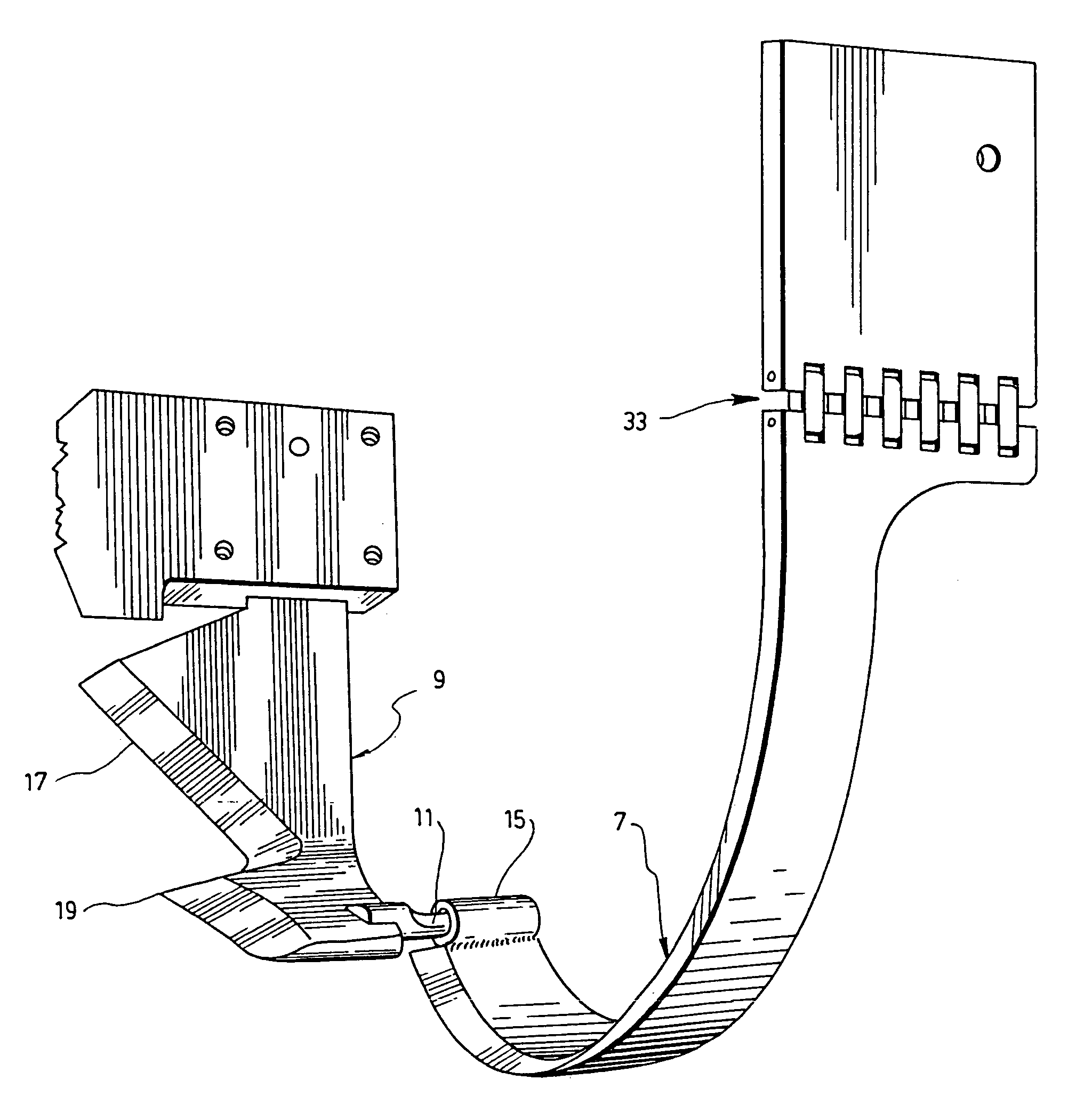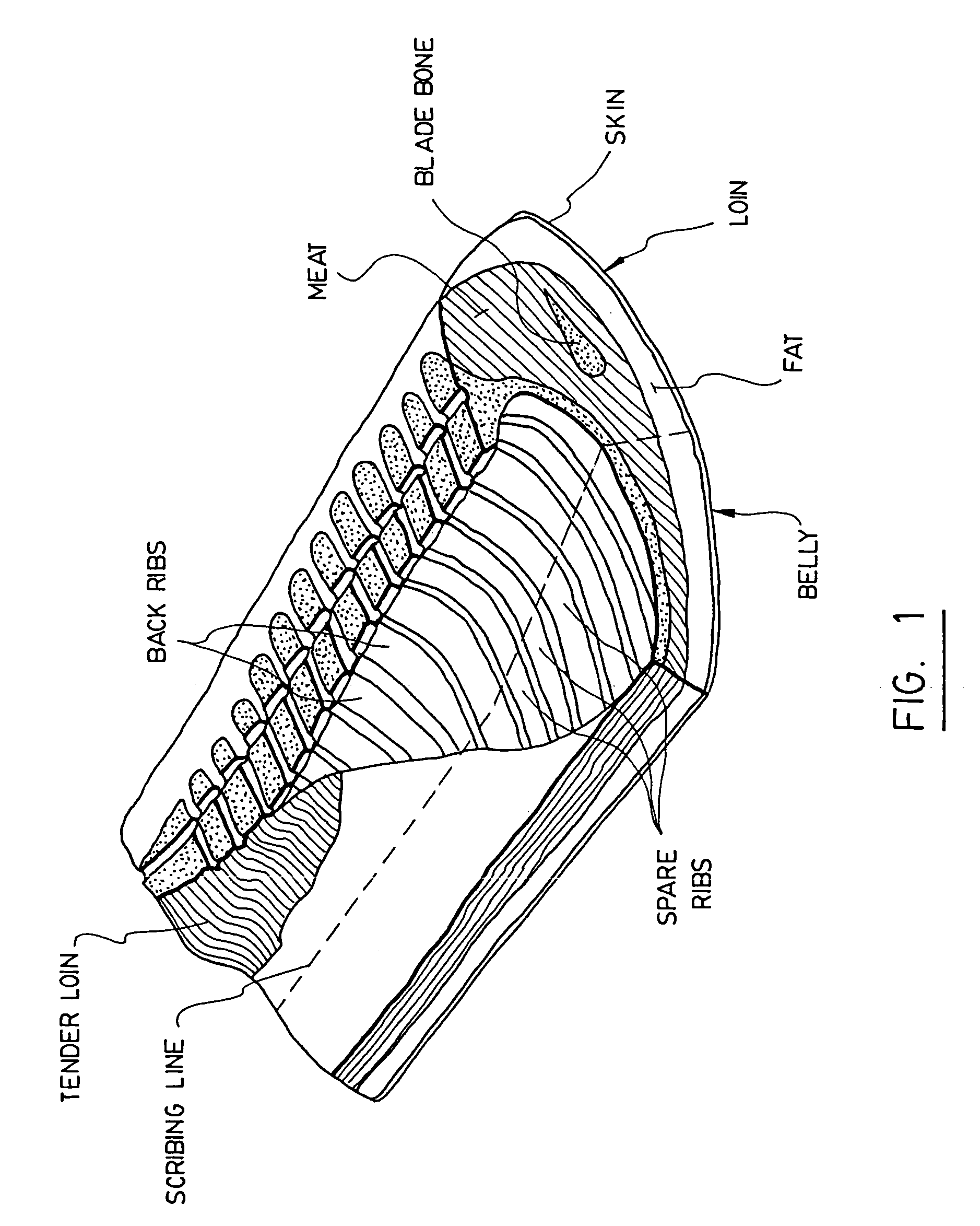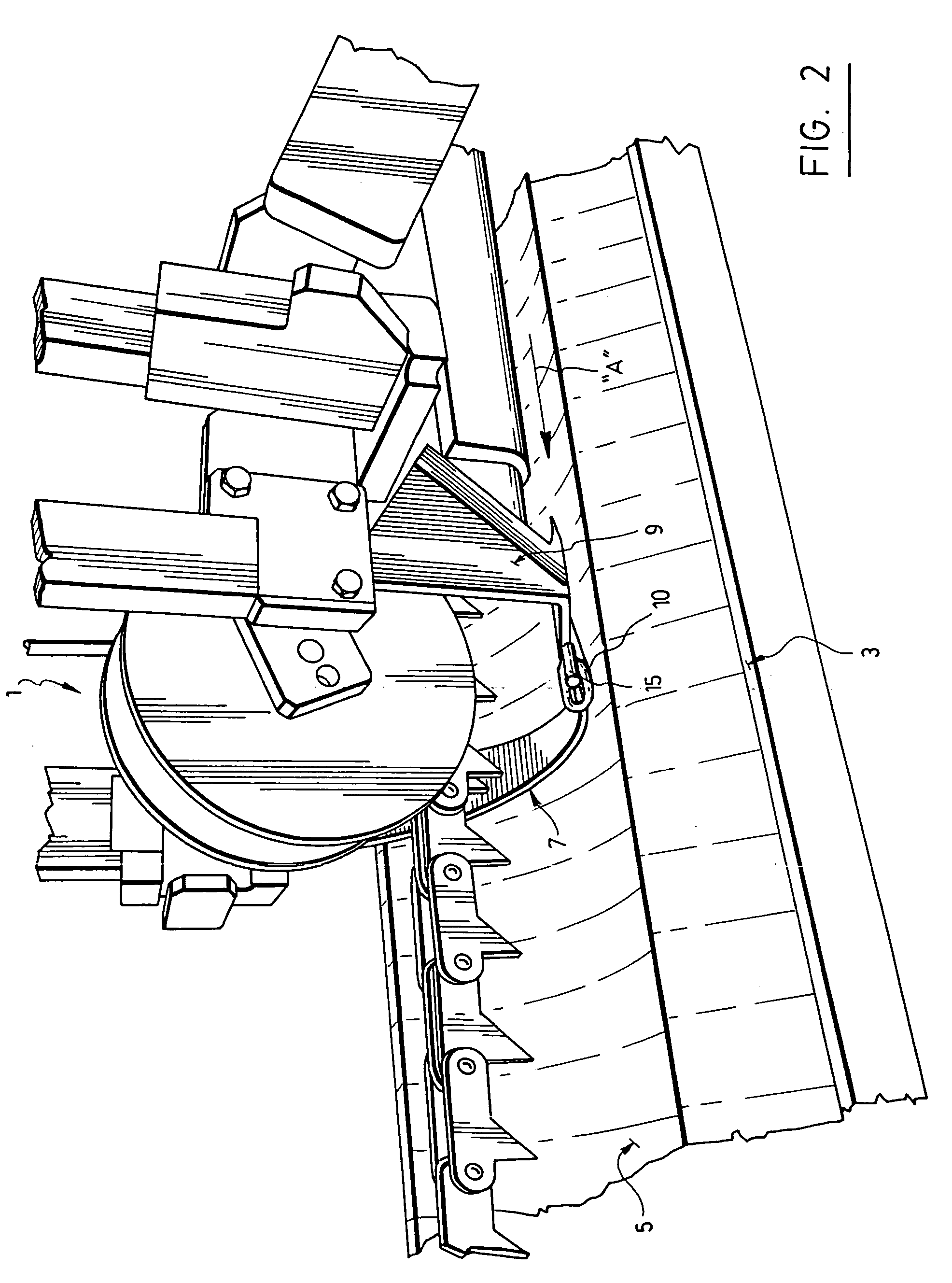Loin puller with two separate cutting blades
a cutting blade and puller technology, applied in the field of pullers, can solve the problems of difficult to achieve good sharpening effect, difficult to make in one piece with an appropriate and efficient sharpening edge, and difficult to hit the blade bon
- Summary
- Abstract
- Description
- Claims
- Application Information
AI Technical Summary
Benefits of technology
Problems solved by technology
Method used
Image
Examples
Embodiment Construction
[0050]The improved loin puller1 according to the different preferred embodiments of the invention as shown in FIGS. 2 to 6, is devised for trimming off the fat and skin viz. the “backfat”, from the back of a loin “L” scribed from a belly “B”, as shown in FIG. 1. This improved loin puller 1 basically comprises:[0051]a frame 3;[0052]a conveying system 5 mounted onto the frame for engaging the loin and moving it towards a cutting zone in the direction shown by the arrow “A” in the drawings; and[0053]a cutting tool mounted onto the frame 3 in the cutting zone for engaging the loin when the same is moved by the conveying system 5 and for cutting the backfat to be trimmed off from the same with the so cut backfat still remaining attached to the adjacent part of the belly, as is shown in FIGS. 4 and 6
[0054]As aforesaid, the improvement essentially lies in that the cutting tool comprises two blades 7 and 9. One of these blades, namely the one numbered 7, is arcuate and positioned onto the f...
PUM
 Login to View More
Login to View More Abstract
Description
Claims
Application Information
 Login to View More
Login to View More - R&D
- Intellectual Property
- Life Sciences
- Materials
- Tech Scout
- Unparalleled Data Quality
- Higher Quality Content
- 60% Fewer Hallucinations
Browse by: Latest US Patents, China's latest patents, Technical Efficacy Thesaurus, Application Domain, Technology Topic, Popular Technical Reports.
© 2025 PatSnap. All rights reserved.Legal|Privacy policy|Modern Slavery Act Transparency Statement|Sitemap|About US| Contact US: help@patsnap.com



